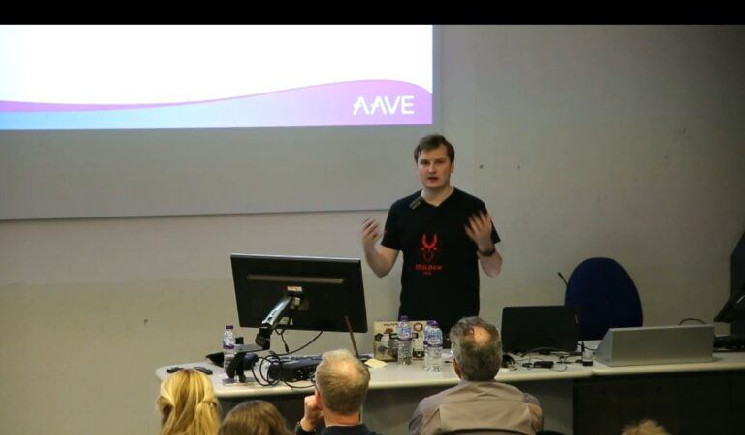Stani Kulechov is the founder of Aave. He established Aave as one of the pioneering projects in the decentralized finance (DeFi) space. Kulechov’s vision was to create a transparent and open financial ecosystem using blockchain technology, which led to the development of Aave as a decentralized lending platform. His work with Aave has been significant in advancing the DeFi sector and has contributed to the broader adoption of blockchain technology in financial services.
Earlier today, Kulechov shared his extensive thoughts on the future of DeFi in 2024.
Democratizing Finance Through Ethereum
Kulechov began his journey with a passion for democratizing finance, which he saw as achievable through Ethereum’s platform. This blockchain enabled the creation of open, accessible, and transparent financial infrastructure, significantly reducing the need for centralized intermediaries. Kulechov was particularly drawn to the low barrier for innovation in this space, allowing for the development, composition, and deployment of new programmable financial applications.
The Growth and Impact of Innovative Protocols
Reflecting on the journey of innovative DeFi protocols, Kulechov highlighted their growth from early stages to significant milestones in total value locked (TVL). This growth underscored the increasing significance of DeFi in the financial landscape.
Revenue Models and DAO Treasury
Kulechov pointed out the unique revenue models of certain DeFi protocols, which collect revenue directly into a DAO (Decentralized Autonomous Organization) Treasury. This revenue is used to finance various community activities, including development, security, and governance. He emphasized the accessibility and flexibility of these DAOs compared to traditional financial institutions.
DAOs as Tools for Governance
Kulechov emphasized the importance of DAOs in governing neutral and global financial infrastructures. He likened these DAOs to a democratic system governing vital public infrastructure, similar to how the internet might have been governed if crypto-economics existed earlier.
Protocol-Market Fit in DeFi
Based on the fees earned and usage statistics, Kulechov argued that DeFi has achieved Protocol-Market Fit (PMF), a unique accomplishment in the web3 space. He sees this as evidence of DeFi’s viability and success.
The Role of Layer 2 Rollups and Subnets
Kulechov discussed the importance of Layer 2 Rollups and subnets in scaling blockchain space. He sees these technologies as essential for financializing and monetizing various use cases, such as social media, gaming, and regenerative projects on the web3.
Expansion Across Networks
Recognizing the demand for liquidity across networks, Kulechov noted that certain DeFi protocols have been deployed over multiple networks, with plans for further expansion in 2024. He also anticipates that resourceful DeFi communities will explore opportunities in non-EVM (Ethereum Virtual Machine) networks.
The Evolution of DeFi
Kulechov expressed his excitement about the current state of DeFi, noting its transition from a nascent stage to a more mature phase. He highlighted the decentralization of protocols and their expansion across various networks as key milestones.
Lower Transaction Fees and Consumer Usage
He sees lower transaction fees as pivotal for DeFi’s integration into payment infrastructure and its adoption in consumer usage. This vision aligns with the potential role of decentralized stablecoins in mainstream web3 payments.
Challenges and Opportunities Ahead
Kulechov outlined several challenges for DeFi, including improving governance, risk management, smart contract security, and liquidity management across networks. He also emphasized the need for Layer 2 solutions to enhance fault tolerance and reduce reliance on centralized points of failure.
Future Innovations and Governance Participation
Looking ahead, Kulechov expects more innovation within the DeFi ecosystem, particularly in liquidity markets, decentralized stablecoins, and other areas. He also looks forward to seeing new participants in governance, contributing to the protocols’ evolution.
A Call to the DeFi Community
In conclusion, Kulechov extended his wishes for a successful 2024 to the DeFi community, reminding them of their role in building a more accessible and improved financial system. He acknowledged the community’s contributions as vital to this transformative journey.
2024 is going to be the most important year for DeFi.
My DeFi journey started 7 years ago when I became passionate about the idea of democratizing finance. Ethereum enabled a platform where financial enthusiasts like me could build open, accessible, and transparent financial…
— Stani^ (@StaniKulechov) December 30, 2023

